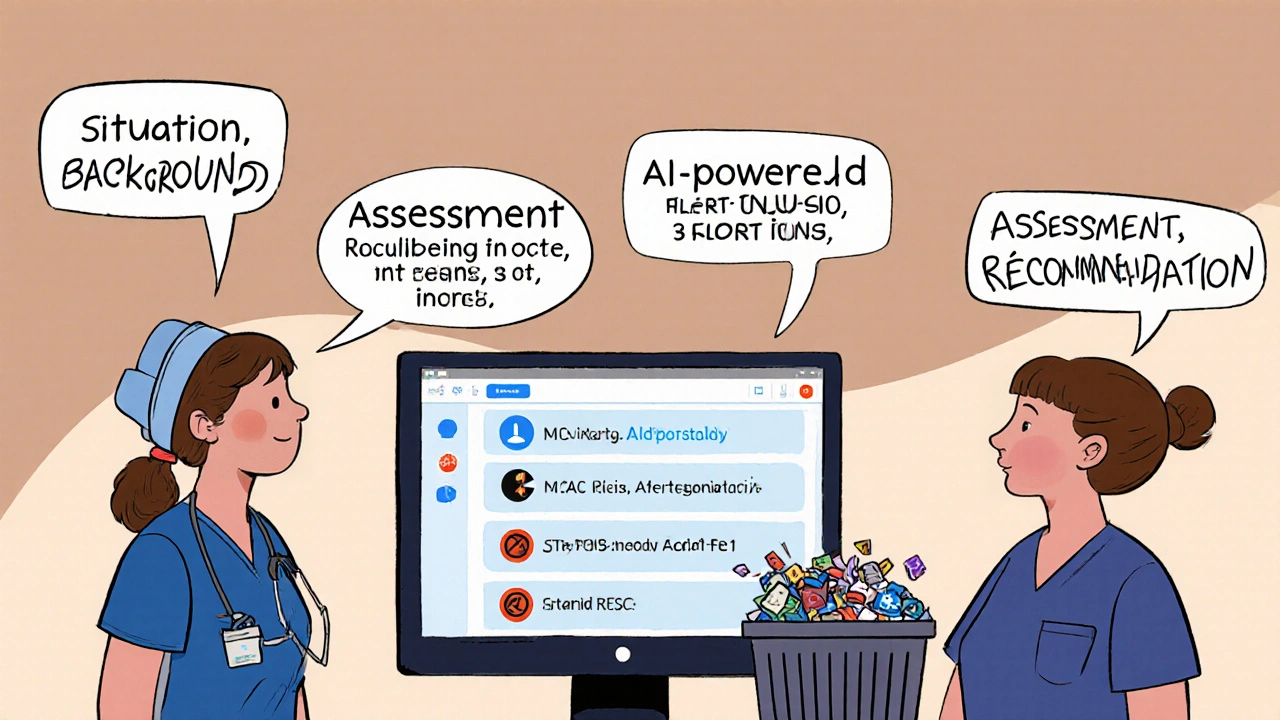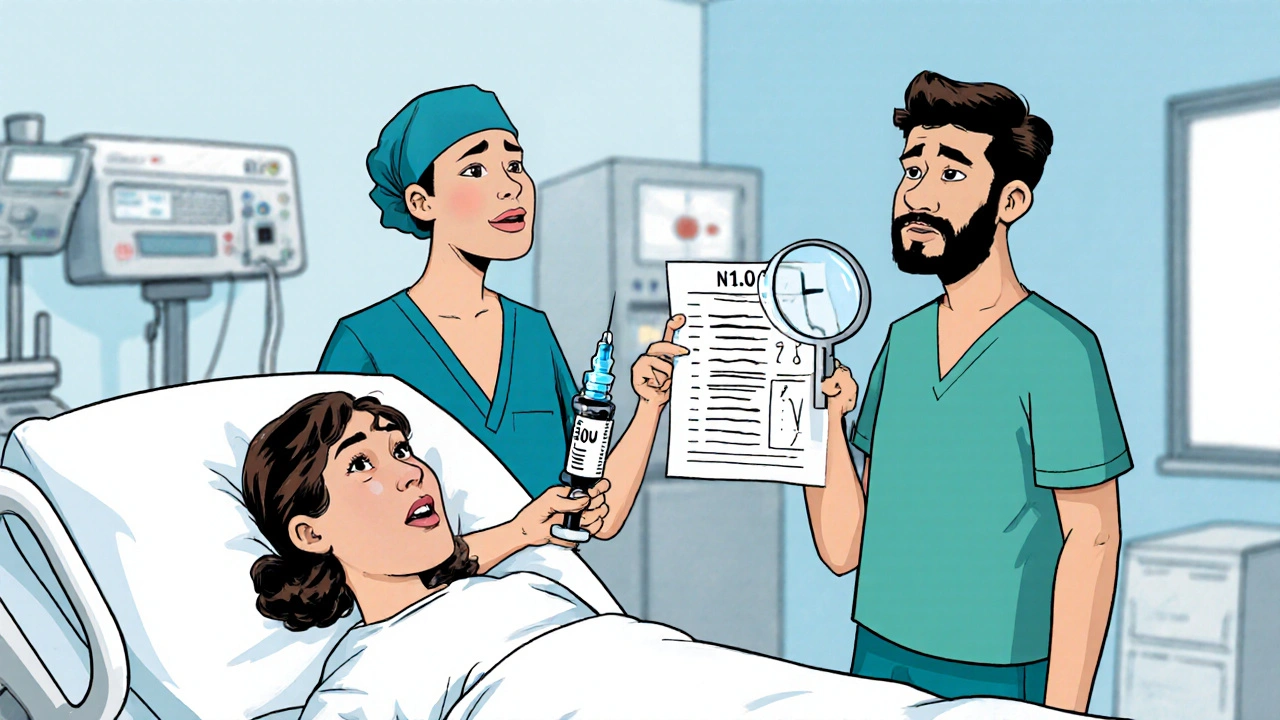Getting a medication dose wrong isn’t just a mistake-it can kill. A patient meant to get 1 unit of insulin gets 10. A child’s weight-based dose is miscalculated by a decimal point. A nurse misses a change because the doctor scribbled ‘10U’ instead of ‘1.0U’. These aren’t hypotheticals. They happen every day, and too often, they’re caught too late. The good news? Most of these errors are preventable. The key isn’t working harder-it’s working smarter with proven verification steps and clear communication.
Why Dose Verification Isn’t Optional
Medication errors are the third leading cause of death in the U.S., behind heart disease and cancer. And a huge chunk of those errors happen during dose changes. The Institute for Safe Medication Practices (ISMP) says 19 medications are so dangerous-like insulin, heparin, and opioids-that they’re labeled high-alert drugs. One wrong dose can trigger cardiac arrest, severe bleeding, or respiratory failure. Studies show that when double checks are done right, they cut administration errors by nearly 30%. But here’s the catch: if you do them wrong, they don’t help at all. That’s why the old way-having two nurses nod at each other and say “looks right”-isn’t enough.The 3-Step Verification Protocol That Works
The safest systems don’t rely on memory or trust. They rely on structure. Here’s what actually works, backed by data from hospitals that reduced errors by over 30%:- Independent calculation - Two licensed providers do the math separately. No talking. No peeking. One calculates based on weight, renal function, and lab values. The other does the same. If they don’t match, they stop and figure out why. This takes 2-3 minutes but catches 90% of calculation errors.
- Context check - Before giving the dose, verify it makes sense for the patient. Is their creatinine clearance down? Did they just have a bleed? Are they on a drug that interacts with this one? This step adds 1-2 minutes but prevents 40% of dose errors tied to patient-specific factors.
- Barcode confirmation at bedside - Scan the patient’s wristband. Scan the medication. The system should match the drug, dose, route, and time to the electronic order. If it doesn’t light up green, don’t give it. This step takes 30-60 seconds and blocks 86% of wrong-drug or wrong-dose errors.
Where Human Communication Breaks Down
Technology helps, but people still cause most errors. The Joint Commission found that miscommunication is the root cause in 65% of serious medication events. Here’s how it usually goes wrong:- A doctor writes “10U” for insulin. The nurse reads it as “10 units.” But the doctor meant “1.0 unit.” No one catches it because no one asks for clarification.
- A pharmacist calls in a dose change during shift change. The night nurse is tired. The day nurse didn’t hear the full message. The change gets lost.
- A nurse says, “I gave the heparin,” but doesn’t say the dose. The next nurse assumes it’s the usual 5,000 units. It was 10,000.
Example:
- Situation: “Mr. Johnson’s INR is 5.2 this morning.”
- Background: “He’s been on warfarin 5mg daily for atrial fibrillation.”
- Assessment: “His dose needs to be reduced to 3mg to avoid bleeding risk.”
- Recommendation: “I recommend holding today’s dose and restarting at 3mg tomorrow. Please confirm.”
What Technology Gets Right-and Wrong
Barcode systems and smart pumps are powerful tools. But they’re not magic. Here’s what they do well:- Barcodes prevent 86% of wrong-drug and wrong-dose errors.
- Smart infusion pumps with dose-error reduction software stop 85% of overdose errors.
- Wrong patient? Barcodes can’t catch that if someone scans the wrong wristband.
- Wrong concentration? If the system thinks 100 units/mL is correct, it won’t flag a 10-fold error if the dose is entered as 10 units.
- Wrong route? If the order says IV and someone gives it IM, the system won’t know unless it’s programmed to detect it.

The Hidden Danger: Alert Fatigue
Here’s the dark side of technology: too many alerts. Nurses report seeing 15-20 alerts per hour during a 12-hour shift. Most are false alarms. “Another wrong time?” “Another dose too low?” After a while, they start ignoring them. A 2022 study found nurses only paid attention to 15% of barcode alerts. That’s not human error-it’s design failure. The fix? Reduce noise. Only trigger alerts for high-risk scenarios:- Insulin doses over 10 units
- Heparin doses over 5,000 units
- Doses that don’t match weight-based calculations
- Changes during shift handoffs
When to Skip the Double Check (Yes, Really)
You might think: more checks = safer. But that’s not true. The ISMP warns: overusing double checks makes people complacent. If you double-check everything, you stop thinking. The goal isn’t to check every dose-it’s to check the right doses. Use double checks only for:- High-alert medications (insulin, heparin, opioids, potassium, chemotherapeutics)
- Children under 12
- Patient transfers between units
- Any dose change with a 50% or greater increase/decrease
What Gets Missed: Documentation
If you don’t write it down, it didn’t happen. And if you write it poorly, it won’t help anyone later. AHRQ found that 29% of verification failures happened because documentation was incomplete. Every verification must include:- Time of verification
- Names and credentials of both verifiers
- Confirmation of patient-specific factors (e.g., “Renal function stable, CrCl 65 mL/min”)
- Final confirmation: “Dose verified and administered”

Real Stories, Real Consequences
A nurse on AllNurses shared: “I almost gave 10 units of insulin instead of 1 unit. The double check caught it. The order said ‘10U.’ I thought it was 10 units. My partner said, ‘That’s not right for his weight.’ We called the doctor. He meant 1.0 unit. We almost killed him.” A pharmacist on Pharmacy Times said: “Our barcode system didn’t flag a 10-fold error. The concentration was entered correctly. The dose was wrong. Only the human noticed.” These aren’t rare. ECRI Institute recorded 1,247 reported incidents of incorrect dose changes in 2022. 287 caused harm. 17 resulted in death.What’s Changing in 2025
New tools are coming. AI systems like Epic’s DoseRange Advisor now predict risky changes before they’re ordered-cutting inappropriate doses by 52% in trials. Voice recognition tools let nurses say, “Verify insulin 1 unit SC for patient Smith,” and the system logs it automatically. Blockchain systems are being tested to create tamper-proof records of every dose change. But the biggest shift? From universal checks to risk-stratified verification. You don’t need to check every pill. You need to protect the patient from the doses that could kill them.Final Checklist: Your Daily Safety Routine
Use this before giving any dose change:- ☐ Is this a high-alert drug? (Insulin, heparin, opioids, etc.)
- ☐ Did two people calculate the dose independently?
- ☐ Did we check the patient’s weight, kidney function, labs?
- ☐ Did we use SBAR to communicate the change?
- ☐ Did we scan the patient and the medication?
- ☐ Did we document the time, names, and confirmation?
What’s the most common mistake when verifying a dose change?
The most common mistake is assuming the order is correct without double-checking the math or context. A doctor writes ‘10U’ for insulin, and the nurse assumes it means 10 units. But it was meant to be 1.0 unit. No one questions it. Always verify the number, not just the label.
Do I still need a double check if my hospital uses barcode scanning?
Yes-for high-alert drugs. Barcode systems catch wrong drugs and wrong doses 86% of the time, but they can’t catch wrong concentrations or wrong patient IDs if the wristband is misread. Independent double checks catch those. Use both together.
Why do nurses skip verification steps?
Time pressure. During peak shifts, nurses report doing 12-15 med passes per hour. When there are 10 alerts and 3 patients waiting, verification gets rushed. The fix isn’t blaming nurses-it’s redesigning workflows to protect safety time.
How do I know if a dose change is too high?
Any change over 50% of the previous dose should trigger a second review. For example, if a patient was on 20 mg of warfarin and the new order is 40 mg, that’s a 100% increase. That’s a red flag. Always verify with a second provider and check INR trends.
What’s the best way to communicate a dose change to the next shift?
Use SBAR: Situation (what’s happening), Background (why), Assessment (what you think), Recommendation (what you want done). Don’t just say, “I gave the heparin.” Say, “Mr. Smith’s INR was 6.2. We held his 5,000-unit dose and restarted at 3,000 units. Please monitor INR tomorrow.” Clear, complete, actionable.


All Comments
Marissa Coratti November 25, 2025
Let me be blunt: the 3-step verification protocol isn't just best practice-it's the bare minimum. Independent calculation, context check, and barcode confirmation aren't checkboxes; they're lifelines. I've seen nurses skip the context check because they're 'swamped,' and then you get a patient with acute renal failure getting a full dose of vancomycin. That's not negligence-it's systemic failure. We need mandatory simulation drills for high-alert meds, not just annual compliance videos. And documentation? If you're writing 'verified' without listing the actual CrCl or INR values, you're not documenting-you're obfuscating. The system rewards speed over safety, and until we change that incentive structure, people will keep cutting corners. This isn't about being paranoid-it's about being professional.
Also, alert fatigue isn't a nurse problem-it's a vendor problem. Why are we getting 15 alerts for a 0.2 mL difference in dopamine when the real danger is a 10-fold insulin error? Smart systems should prioritize, not bombard. We need AI that learns from near-misses, not just alerts that scream like a broken fire alarm.
And yes, double-checks should be risk-stratified. I'm not going to double-check metformin for a diabetic with stable HbA1c, but I will stand over the nurse like a hawk if she's drawing up 50 units of insulin. That's clinical judgment, not bureaucracy.
2025's AI tools? Great. But they're only as good as the data feeding them. Garbage in, garbage out. If your EHR has 300 different insulin orders labeled 'subcutaneous,' no algorithm will save you. Human clarity first. Tech second.
And if you think SBAR is too formal? Try explaining to a family that their loved one died because someone said 'I gave the heparin' instead of 'I held the 5,000-unit dose and restarted at 3,000 units due to INR 6.2.' That's the difference between a note and a narrative that saves lives.